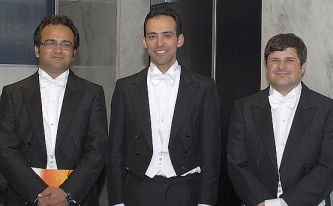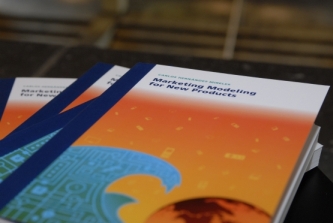Marketing Modeling for New Products
Managers and firms everywhere are launching new products or new generations of products at an extremely fast pace. The management of these products requires precise introduction timing, adequate pricing policies, the right consumer targeting and the identification of the influential markets that drive their sales and their fast adoption. The thesis of Carlos Hernandez <link erim events _blank>Marketing Modeling for New Products presents several managerial insights on these topics and these insights are backed up with scientific research and new econometric methodologies.
 In the thesis, he presents a set of mathematical models and econometric approaches that are suitable to study the marketing for new products and these models are the main scientific contribution of the thesis.
In the thesis, he presents a set of mathematical models and econometric approaches that are suitable to study the marketing for new products and these models are the main scientific contribution of the thesis.
Carlos Hernandez has defended his dissertation on June 29, 2010 at Erasmus School of Economics, Erasmus University. His promoter is <link people philip-hans-franses _blank>Prof.dr. P.H. Franses, Professor of Applied Econometrics and Professor of Marketing Research, Erasmus School of Economics, Erasmus University. Copromotor is Dr. D. Fok. Other members of the Doctoral Committee are Prof.dr. B.J. Bronnenberg, Prof.dr. P.K. Chintagunta, Frenkel Ter Hofstede and Prof.dr. R. Paap.
About Carlos Hernandez Mireles
Carlos Hernandez Mireles received a B.A. in Economics with honors from ITESM in 2001 and he obtained the MPhil degree in Marketing from the Erasmus Research Institute of Management (ERIM) in 2006. In November of 2006, he started his PhD research in ERIM and the Econometric Institute. His main research interests are marketing modeling and Bayesian methods. His research has been presented at several international conferences. Prior and during his PhD Carlos worked for Cemex, Unilever, and Heineken.
Abstract
 This thesis addresses the analysis of new or very recent marketing data and the introduction of new marketing models. We present a collection of models that are useful to analyze (1) the optimal launch time of new and dominant technologies, (2) the triggers, speed and timing of new products’ price landings, (3) the consumer heterogeneity that drives substitution patterns present in aggregate data, and (4) the influential locations that drive the diffusion of new technologies. The econometric approaches that we apply are diverse but they are predominantly Bayesian methods. We use Bayesian mixture modelling, Bayesian variable selection techniques, Bayesian spatial models and we put forward a new Bayesian approach for the random coefficient logit model. The data that we analyze consist of unique and large datasets of video-game prices, video-game consoles’ sales, aggregate sales data for consumer products and Google’s online search data.
This thesis addresses the analysis of new or very recent marketing data and the introduction of new marketing models. We present a collection of models that are useful to analyze (1) the optimal launch time of new and dominant technologies, (2) the triggers, speed and timing of new products’ price landings, (3) the consumer heterogeneity that drives substitution patterns present in aggregate data, and (4) the influential locations that drive the diffusion of new technologies. The econometric approaches that we apply are diverse but they are predominantly Bayesian methods. We use Bayesian mixture modelling, Bayesian variable selection techniques, Bayesian spatial models and we put forward a new Bayesian approach for the random coefficient logit model. The data that we analyze consist of unique and large datasets of video-game prices, video-game consoles’ sales, aggregate sales data for consumer products and Google’s online search data.
More Information
Pictures of the Event
Full Text of the Dissertation


